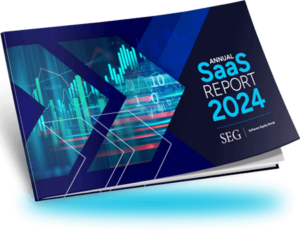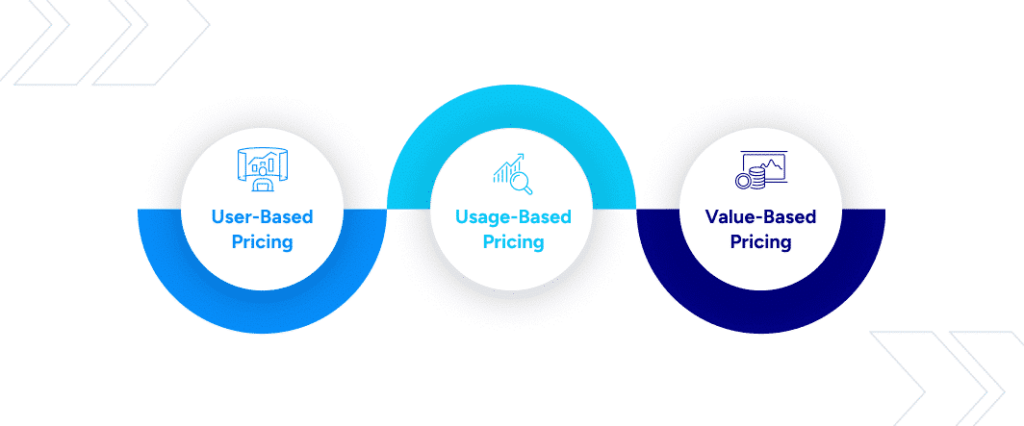- Company
Featured Resource
CLIENT STORYModern Message
To Real Estate
Giant RealPage
- Sectors
Featured Industry Report
EXPERT SERIESManufacturing Software
Report – Part 2
- Research
Featured Resource
FEATURED REPORTThe SEG 2024
Annual SaaS Report
- Tools
Featured Resource
WHITEPAPER20 Factors to Track When Valuing Your
SaaS Company
- Blog
Virtual Coffee with SEG: SaaS Sales & Marketing Best Practices in the Current Market

Coffee with Andrea Pitts, SVP of Global Sales, Arena Solutions
Sales departments play a vital role in the operation and success of SaaS businesses. There are several effective strategies operators can employ to optimize sales departments, and are often overlooked. In a recent “Virtual Coffee,” Software Equity Group’s Managing Partner, Allen Cinzori, had coffee with Andrea Pitts, Senior Vice President of Global Sales at Arena Solutions. In this incredibly valuable discussion, Andrea Pitts shares some insight into key sales best practices every SaaS operator should know. Thank you, Andrea, for taking the time to share these effective strategies and terrific content.
Arena Solutions is a provider of a cloud-based product life cycle management application and product-centric quality management solution for electronic high tech and medical device companies.
Below are some highlights from the discussion. To view the entire video, select the link below.
Click to Watch Virtual Coffee with SEG
Allen: Since JMI’s investment in Arena Solutions, what has been the impact on sales & marketing? What are the top one or two areas they have really helped you and your team?
- Andrea: It’s been a very exciting time since JMI’s investment in Arena Solutions. We had some pretty drastic changes, very quickly. Within the first year, we saw our ASP’s (average selling price) double, our CAC (customer acquisition cost) immediately go down, and our retention rates immediately rise. We were in tune with these KPIs beforehand, but since we implemented the changes, it’s been outstanding.
- Andrea: The area they helped with most was around segmentation. Prior to JMI, we sold to “anybody.” Very early on, we took a closer look at our customers and evaluated the prior ten quarters of new revenue and where it came from. We were selling to 89 industries, and after we segmented our customers, we saw that over 90% of our new revenue came from only 14 industries. When we did further analysis of the 10% or 15% of those other industries, the retention rates were in the low 70s. It was bad business for us. The revenue looked good, but they didn’t stick around, and we spent a lot of time trying to sell to them. We then took the segmentation approach to sales by segmenting the sales reps and separating them into two target areas. We also segmented our customers so we could have better customer marketing and to make sure we were selling the right products to the right customers.
- Andrea: The result was extreme and fast. As a sales leader, it can be scary to see the lead generation of the marketing pipeline take a dive in that first quarter, especially after having seen millions of dollars being generated for years. I was concerned we were never going to make our revenue that year. But we surpassed our bookings targets and we hit the gross retention target in year one. We had sales reps hitting their quotas on a consistent basis, even after raising quotas. The results were extreme, and it gets back to segmentation. Analyze that data.
Allen: There is often a lack of information from sales departments as it relates to capturing and tracking sales data. As you know, knowing and understanding your company’s data and sales metrics is critical. What have you done to overcome this hurdle?
- Andrea: It’s so important to identify the key data and metrics that departments need to track. You’ll find that everyone wants to track everything. Gather input from the teams and cut it in half. Keep the fields at a minimum and determine the sales fields you absolutely must have. In our world, we adopted the MEDDIC methodology, which allowed us to be very consistent in the sales cycle. Ultimately, it’s up to sales management to keep the sales reps honest, and to make sure they discuss MEDDIC on their weekly discussions. A very important motto is: “Don’t expect what you don’t inspect.”
- Andrea: Another step we took was we time stamped every part of the sales cycle. This was huge. We did this a number of years ago, prior to JMI. But, bringing in JMI and their expertise allowed us to very quickly start generating reports and dashboards. It helped us see the conversion rates that we needed on a consistent basis. If you can get those core bits of data, you can cut the data and analyze all sorts of things as it relates to your sales cycle. Where do we need to optimize? Where can we help sales reps get better? We adopted MEDDIC and report on that. In our discussions, I have it up on my screen so I can be asking questions and digging in where needed. We put a timestamp on things to make sure the important metrics are tracked.
Allen: In the past, we’ve discussed a concept of ‘selling in the weeds’ where we often see sales reps focusing on selling products and features. How do you think about sales now and how have you evolved from this concept of ‘selling in the weeds’?
- Andrea: It’s very easy to get into the weeds because that’s where the target audience likes to play. When you start talking about feature functionality, it is not the place to go. One of the things we’ve worked very hard on is raising the level of conversation. I am maniacal about role-based and value-based selling and combining those two.
- Andrea: If I am having a conversation with an engineer, I want to understand where the issues are. What I should concentrate on are those areas of value where we can help that engineer. If I am talking to the Manager, it’s similar, but a much different conversation as well. Managers have different things they are tasked with and measured on. Instead of understanding what they do in their job every day, understand what is keeping them from being able to do their job. Make sure you can tie it back to the value you provide. The first thing you need to know about Managers is their bonuses rely on certain successes to take place. Every sales rep should know in their mind where these people are going to be bonused because that is really where you are going to get their attention.
- Andrea: In marketing, we have a lot of conversations to start doing role-based nurturing and role-based outreach sequences. I’m really excited to see how that helps with the conversion of the nurturing that we have in place. Role-based and value-based is where it all is. I preach that daily.
Allen: In this COVID world, how have traditional sales been impacted and what will become the new norm going forward?
- Andrea: I feel strongly that the way salespeople are now having to sell makes them raise their game, and I love that. Video calls were never a foreign concept to us. What was foreign was being on camera. In the past, it was rare to see people on camera. Now, with Zoom, and the fact that everybody is in their remote locations, people are now getting on camera. It is changing drastically how we communicate, and we’re embracing it.
- Andrea: For example, I was on a Zoom sales call recently with a number of people who joined. Unlike sitting in a conference room doing a presentation, you could see everyone’s reaction right there. You could see the director of engineering kind of roll his eyes, and the senior engineer shake his head. If you were in a conference room, you would miss those things. This has just changed the way we sell, and it allows us to raise our game and be more personal. We’re able to have much more personal conversations with people on Zoom calls. Obviously for the larger deals, we still want to find those opportunities to go on site when we can. I do believe for the larger deals, there is greatness in face-to-face connections, and we’ll get back to that. But, I just think this has changed the way that everyone is selling and it’s requiring sales reps to raise their game. Lastly, it’s inexpensive. Our cost of sale, based on traveling budget which hasn’t been used in months, is looking really good right now. It’s the way of the future.
“Virtual Coffee with SEG” are conversations with industry experts, providing real-time insights into the current market and self-help advice to SaaS CEOs and operators.
Please reach out if you’d like to discuss how current events may impact your software company’s near and long-term plans. View our last Virtual Coffee with SEG: Vista’s View of the SaaS Marketplace.







